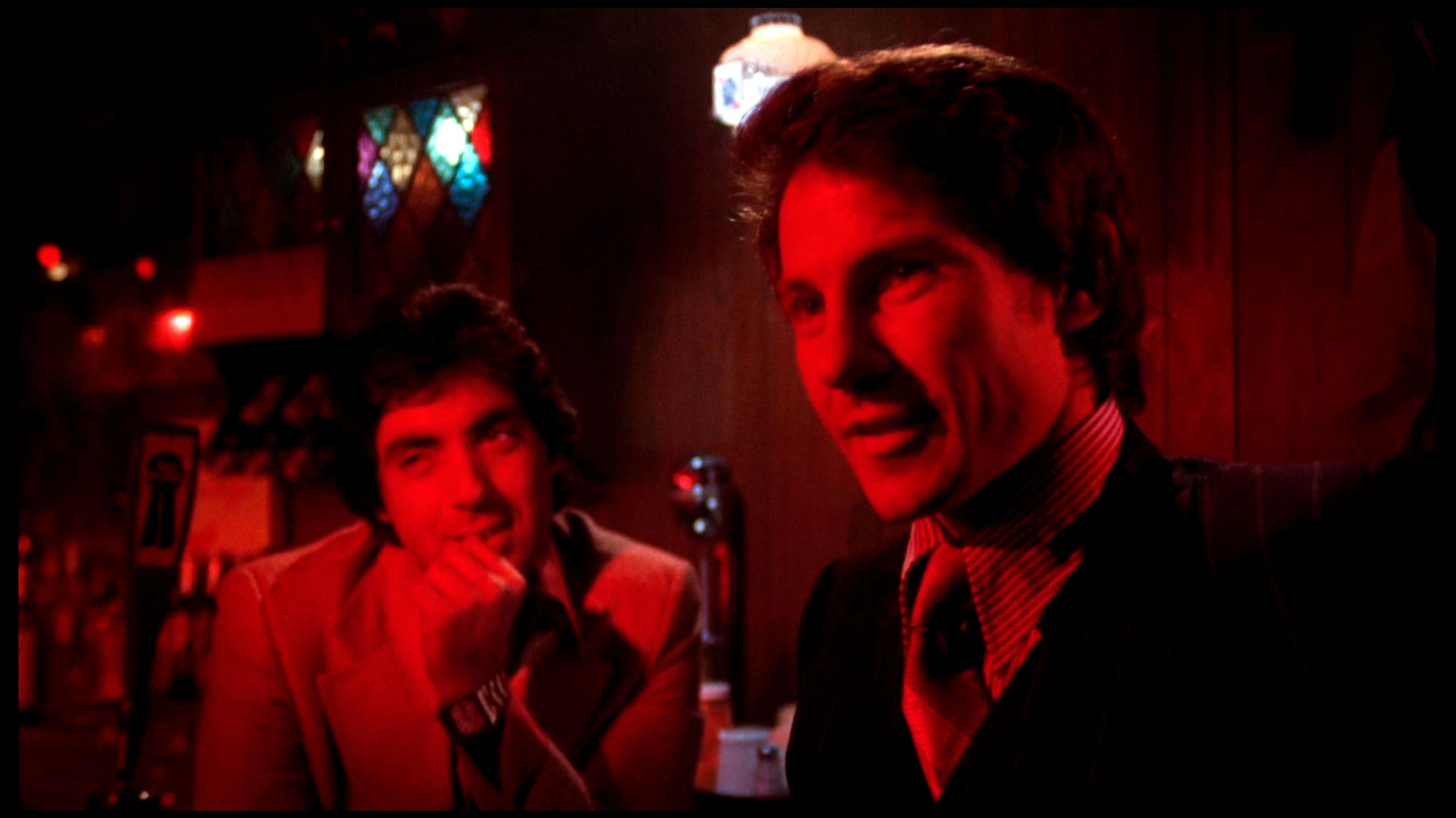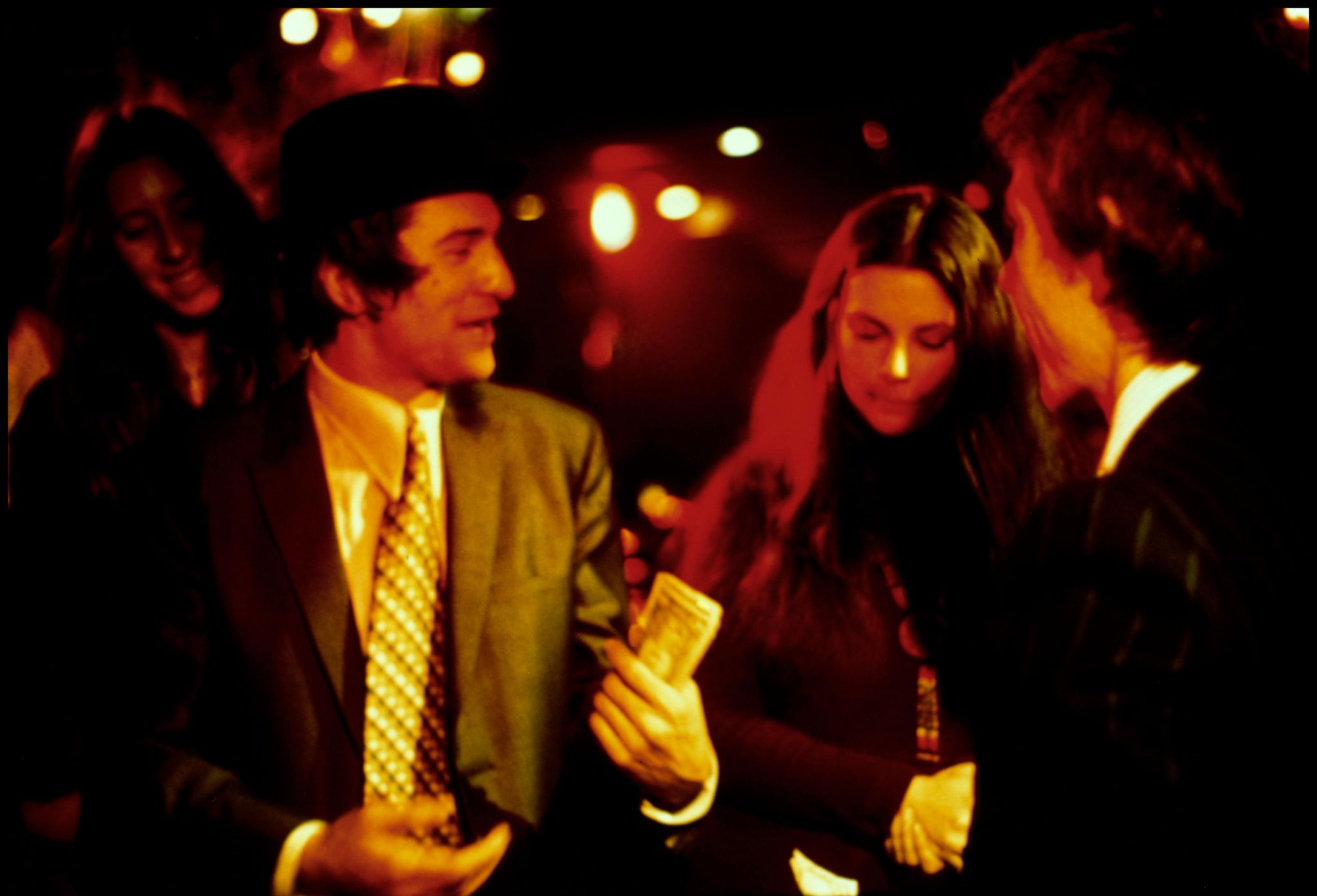It’s easy to misremember Mean Streets, released 50 years ago this month, as Martin Scorsese’s first film. In fact, it’s his third. There’s no doubting though that it’s the film when he truly arrived. One scene in particular, just 12 minutes in, is the perfect expression of this arrival – a sensory assault that displays many of the Scorsese hallmarks we would come to venerate over the following five decades.
In turn, it would influence a whole new generation of independent filmmakers, Richard Linklater among them, to, in his words, ‘Go do this’.
We have Scorsese’s own mentor, John Cassavetes, to thank for ensuring Scorsese seized his moment. After watching Scorsese’s second feature, the rather formulaic Roger Corman-produced Boxcar Bertha, Cassavetes told him, affectionately, ‘nice work’ but ‘don’t ever waste a year of your life on shit like this again’.
So Scorsese went back to work on The Season Of The Witch (which later became Mean Streets, a title he didn’t like much but stuck) – a raw, edgy and highly personal tale of small-time hoods in the Little Italy where Scorsese grew up. In the early Seventies, Mario Puzo’s The Godfather book was huge; Mean Streets was its antithesis.
‘To us, it (‘The Godfather’) was bullshit,’ said his friend and co-writer Mardik Martin (who also wrote Raging Bull and New York, New York). ‘It didn’t seem to be about the gangsters we knew, the petty ones you see around. We wanted to tell the story of real gangsters.’
The heart of the film is the relationship between Harvey Keitel’s Charlie, a conflicted gangster tormented by Catholic guilt, and a loose alter ego for Scorsese himself, and his volatile and dangerous friend Johnny Boy, based on Scorsese’s uncle, and played by a pretty much unknown Robert De Niro, who Scorsese had cast late having been reintroduced at a Christmas party (the pair met as teenagers, having both grown up in the Lower East Side of Manhattan, New York).
For Scorsese, once an asthmatic and virtually housebound kid who’d been hoovering up European and Hollywood genre films since his parents bought a TV set at the age of 6, now a film school graduate with two features under his belt, here was the chance to bring it all together.
All his pent up energy and ideas are let loose when Johnny Boy arrives at the bar with a girl on each arm. This is where the Scorsese and De Niro story – individually and collectively – begins, and everything we have come to associate with them is already on show. One of the most famous actor-director collaborations in film history was off and running.
As the opening guitar of The Rolling Stones’ ‘Jumpin Jack Flash’ kicks in we zoom down the bar into the ashen-faced Keitel, before cutting to a reverse tracking shot showing De Niro in full flow. Mick Jagger’s vocals tell us everything we need to know about who this guy is. The blood red filter, and distorted dialogue, leave no further doubt that trouble is on its way.
When films like Trainspotting and Pulp Fiction used music in this way in the Nineties it felt completely fresh. In fact, Scorsese had beaten them to it by two decades.
Many Scorsese favourites from slow-mos to jump cuts are on show for the first time here. We know how much he loves a voiceover, and it gets an early runout here as Keitel’s inner monologue.
There are even specific shots which are mirrored in his later work. The close-up of Keitel sipping his drink at the bar is a like-for-like comparison with the moment in Goodfellas when De Niro’s Jimmy Conway pulls on a cigarette to Cream’s ‘Sunshine of Your Love’. Even De Niro’s regretful elderly hitman in The Irishman might be loosely connected to the guilt Keitel’s Charlie is grappling.
In just a few on-screen seconds, De Niro’s swagger and charm in this scene take the film in a new direction. It says a lot about De Niro’s talent and confidence that he wanted Keitel’s lead part despite only coming to it late. And such is the range he would go on to show in Raging Bull, Taxi Driver and New York, New York over the next few years, he would have nailed that part too.
In combination with the shadowy lighting and hand-held camerawork, using a state of the art lightweight Aeroflex, bar life has arguably never been more atmospherically depicted.
The improvised exchanges between Keitel and De Niro that follow produce the funniest and most quotable moments in the film.
In fact, The Sopranos comes to mind when watching many of these interactions – the misplaced loyalty, boysy camaraderie, comical dialogue and small-time despair. It’s no surprise that James Gandolfini cited Mean Streets as his biggest influence. ‘I watched it ten times in a row,’ he told Inside The Actor’s Studio.
After Coppola saw Mean Streets, he cast De Niro in The Godfather Part II. When Paul Schrader saw it, he did a U-turn and asked Scorsese to direct Taxi Driver, having previously turned him down.
The shoot itself, done mainly in LA, had been so tight and stressful that Scorsese had to wear white gloves to stop him biting his nails. Yet still he had achieved something ground-breaking, and, aged just 30, it was all in front of him.
In his review of Mean Streets on its release, critic Roger Ebert said Scorsese had the potential to become the American Fellini in the next 10 years. When a concerned Scorsese next saw Ebert in person, he earnestly asked him, ‘do you think it’ll take that long?’














